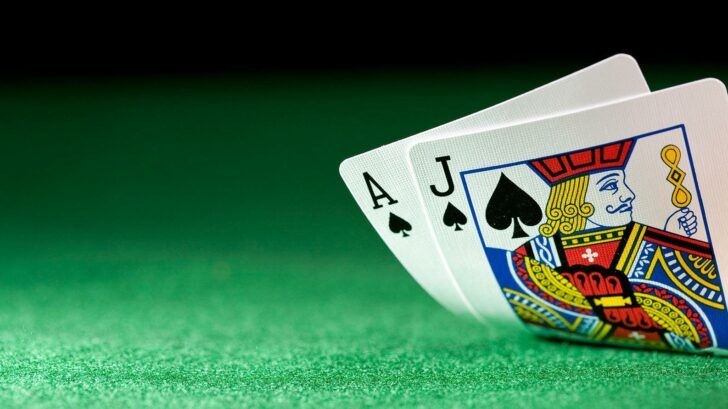How Reading the Dealer’s Upcard Is the Key to Blackjack Success

Advanced blackjack strategy means more than knowing your cards; a skilled player must read the dealer’s hand as well. Failing to do so means losing your bankroll.
Blackjack is a complex game. The rules are fairly simple: hit, stand, split, double down, surrender. Be wary of when you hit, because a bust means an automatic loss. But as you delve deeper into this classic casino game, you find that it is full of surprises. When should you hit and when should you stand on a soft 17? Soft 18? When should you split your hand? To answer these questions, advanced blackjack strategy is required. Most importantly, the player needs to learn how to read the dealer’s upcard. It will tell you what to do in most situations.
The upside of blackjack
When dealing a game of blackjack the dealer leaves one of his initial two cards up and the other down. The card which you cannot see is called the “hole card.” The most important thing is to know the quality of your hand. Next up, analyze the probability that the dealer will bust. A skilled player reads the upcard to attempt to speculate on the quality of the dealer’s hand.
This is most important in situations in which the player’s only hope for victory is a dealer bust. The most obvious example is when the player holds a hard 17. The chances of winning are very slim, but hitting carries a high risk of busting. There are two options: hope that the dealer also has a 17, in which case the hand results in a push, or hope that the dealer busts.
2 & 3: “approach with caution”
These upcards are difficult to gauge. They don’t say very much about the dealer’s hand, other than that they have to hit at least once. They hold a decent chance of busting, so basic strategy says that if your hand is between 13 and 17, your best bet is to stay put. Why? Because the chance of the dealer busting is higher of than the chance of them beating your lukewarm hand, so there is no reason to risk busting yourself.
4, 5 & 6: “attack” cards
An upcard of four, five or six carry the highest chances of the dealer busting. The reason is that even if the hole card is a face card, the dealer has to hit again (dealers must hit on any hand worth less than 17, and in most cases on a soft 17 as well). Consider the following scenario: the dealer shows an upcard of five, with a king in the hole. Holding fifteen total, they hit. If the card is anywhere between seven and king, the dealer busts. Essentially these upcards put the dealer in purgatory; they have no choice but to hit, but the chance of busting is also high.
These are called “attack” cards, meaning that the player should attack the dealer as hard as possible. This means splitting or doubling down to get as much money on the table as possible. Blackjack rules create situations in which the house will win the majority of hands, so winning at blackjack requires milking the relatively few hands which you win. When the dealer is obviously weak the player must seize the opportunity as much as possible.
7 & 8: “show respect” cards
These upcards are seen as neutral. The dealer has neither a high chance of winning nor of busting. If your cards indicate a strong chance of winning, don’t back down from engaging the dealer. More specifically, if you have a 17 or higher you will win most of the time. However, you are advised not to double down in this situation, as the potential reward is probably not worth the risk.
9 through Ace: “cut and run” cards
If the dealer shows a nine, ten or face card, you can be assured that their hand is very strong. If you have a 17 or 18 the risk of busting makes hitting a no-no, but that being said the dealer probably will beat your hand. You’re stuck in purgatory and there isn’t much chance of exiting this situation on top. If you are playing a blackjack rule variation which allows you to surrender, this is a good time to do it.
The surrender maneuver means that the dealer returns half of your bet and the hand is discontinued. They get a little bit of skin off of you, but considering how low your chances of winning were, it beats losing the entire bet. Unsurprisingly, many casinos don’t allow players to cut and run. Just as bad, many players are too prideful to take this option. Don’t be afraid to do it when strategy dictates.




